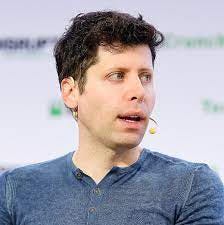Sam Altman's unexpected departure from OpenAI is a remarkable tale of opposing forces converging, creating a "perfect storm" of events that captured the world's attention.
When applied to the tech world, the term "perfect storm" describes a rare and catastrophic event resulting from the simultaneous convergence of multiple factors. Sam Altman’s case wasn't meteorological but a confluence of personal, corporate, governance, and ideological forces.
The First Force: OpenAI's Mission and Corporate Structure
OpenAI was founded as a nonprofit corporation with a mission to ensure safe artificial general intelligence (AGI) for the benefit of humanity. Its charter emphasized that its mission took precedence over profit. This setup, from its inception, created a tension between safety, profit, and governance.
The Second Force: OpenAI's Board and Governance
The board composition, with an even number of members, posed inherent instability. The board included Sam Altman, Greg Brockman, Ilya Sutskever – OpenAI CTO, Adam D'Angelo – CEO of Quora, Tasha McCauley -- CEO of the robotics company GeoSim Systems, and Helen Toner, Director of Research Grants at the Georgetown Centre for Security and Emerging Technology – an AI safety organization – where McCauley also serves as an advisor. Importantly, also, it lacked the expertise in corporate governance needed to guide a later-stage (basically, pre-IPO) tech company effectively. In sum, ideological differences, particularly related to safety concerns, deepened divisions within the board.
The Third Force: Sam Altman
Sam's termination as CEO by the board, influenced by Sutskever's cautious approach to AI development, revealed a philosophical divide. D'Angelo, McCauley, and Toner – very AI safety-centric – further exacerbated the tension. Sam's strong rapport with Microsoft's CEO, Satya Nadella, positioned him on the opposing side of discussions about growth, governance, profitability, and safety measures.
The Fourth Force: OpenAI's Founders
OpenAI's founders, including Sam Altman, played pivotal roles in shaping the organization's mission and recruiting top AI talent. Their collective expertise and financial support were foundational to OpenAI's success.
Greg Brockman's departure was influenced by loyalty to Sam and his perception of injustice in Sam's termination. As an original OpenAI founder, I find this to be a very impactful statement. The exact reasons for his departure remain undisclosed, but communication issues with certain board members, corporate governance challenges, and misplaced priorities around AI regulation and ethics may have played a role.
What is to be done?
Sam’s and Greg’s departure from OpenAI has sparked widespread interest and concern among various stakeholders, including OpenAI employees, the broader AI industry, tech industry analysts, Microsoft, investors, and the public. Many are advocating for Sam Altman's return to the organization and a resolution to the ongoing situation.
To address the perfect storm situation, the following solutions should be considered:
Reinstate Sam as CEO, with a focus on OpenAI. Consider taking Sutskever off the board.
In the short term, expand the board of directors to seven members, adding experienced board members.
Modify the corporate charter to accommodate industry changes to obviate the profit-making elements.
Eventually, replace D'Angelo, McCauley, and Toner with more experienced board members.
Transition from a nonprofit to a Delaware C-Corporation structure over time.
Sam Altman's journey at OpenAI is a unique case study of leadership, governance, and the complex dynamics within tech organizations. The path forward involves recalibrating these forces to steer OpenAI toward its original mission of responsible AI development.




Hi Doug,
have you ever thought about becoming a journalist? That was a very good story!
Servus,
Jörg